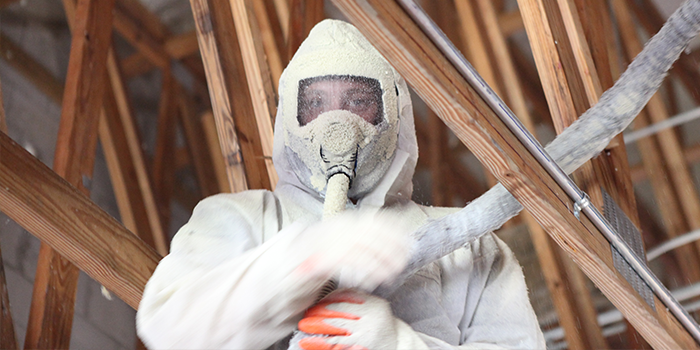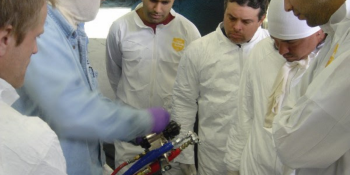Exposure to SPF Chemicals

Exposure Potentials of SPF Chemicals
Chemical
exposures from SPF can happen several ways, and there are both short-term and
long-term exposure risks.
Vapors and Aerosols
Spray application generates isocyanate vapors and aerosols, and inhalation during an SPF installation will typically exceed OSHA occupational exposure limits (OELs). So, skin, eye, and respiratory protection are required. Furthermore, vapors and aerosols can migrate through the building if the area is not isolated and properly ventilated, and after an application, vapors may linger in a building until properly ventilated and thoroughly cleaned. This is why ventilation and strict adherence to reoccupancy time are so important.
Dust
Cutting or trimming the foam as it hardens can generate dust that may contain unreacted isocyanates and other chemicals. After application, dust may linger in a building until properly ventilated and thoroughly cleaned.
Fires and Heat-Generating Processes
When ignited in a fire, spray foam may release a number of chemicals, including carbon monoxide (CO), hydrochloric acid (HCL), hydrogen cyanide (HCN), nitrous oxide (NO), and other toxic chemicals into the air, per the EPA. Fire departments have issued advisories and require the use of full supplied air respirators when fighting polyurethane fires. Also, any heat-generating processes such as drilling, welding, soldering, grinding, sawing, or sanding on or near the foam insulation may generatethese airborne chemicals.
Long-Term Exposure Potential?
After spray foam is applied and cured, it is considered to be relatively inert. However, there are several situations where the cured foam may pose additional potential risks. Maintenance workers, including plumbers and electricians, should not heat or grind spray foam, as it can potentially generate toxic emissions under these circumstances. Building renovations, demolition, or building disassembly done years later can disturb spray foam insulation or physically damage it, resulting in potentially dangerous
Potential Off-Gassing?
Per the EPA, “the potential for off-gassing of volatile chemicals from spray polyurethane foam is not fully understood and is an area where more research is needed.”





























